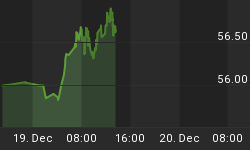A closer look at the latest Federal Reserve flow-of-funds data reveals some exceptional happenings during the third quarter. For those people wondering why open-market interest rates in the United States have remained so subdued in the face of growing inflationary pressures that are now unmistakable, this third-quarter data provides at least some answer.
Introduction:
Last Thursday, the Federal Reserve released its latest "Z.1," also known as the "Flow of Funds Accounts of the United States. I quickly lifted and published tables containing the foreign-related data I do each quarter. In my view, speed was particularly important with this task this time around, within the context of the missive I published on 11/27. That article was entitled, "Dollar Weakness and Its Threat to the US Financial Markets."
When I wrote the November piece, the latest flow-of-funds data that existed were through the June quarter. I went ahead using those numbers anyway, since the accelerating decline taking place in the dollar's exchange-rate value had several of my clients inquiring about just how serious the implications were. My terse answer was, "potentially, very serious." After all, although lots of investors did not realize it at the time, or have since forgotten, 1987's stock-market crash had its genesis in a dollar decline.
So now that the Federal Reserve has made available the latest numbers (released on 12/9 with data through 9/30), it's important to see how this might all fit with market events of the last few months, as well as with possible developments in the months ahead.
A good deal of these numbers have sobering implications, which you will quickly see as you access and read: "The Latest Flow-of-Funds Data: What Happens If/When Foreigners Stop Buying."















